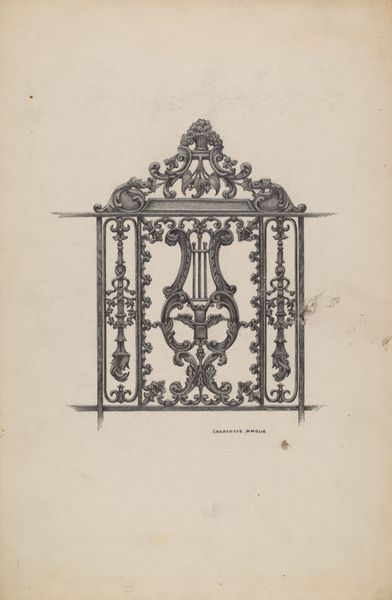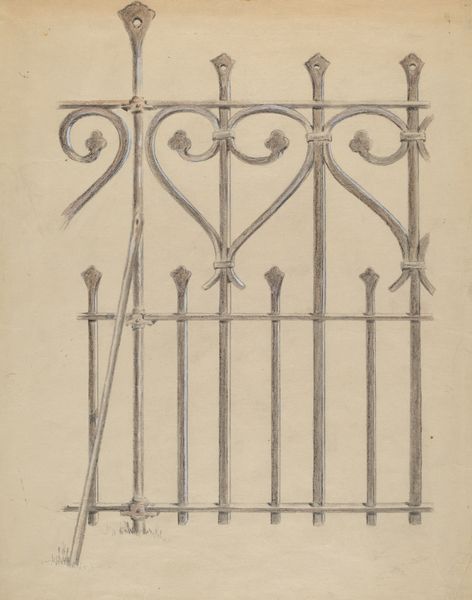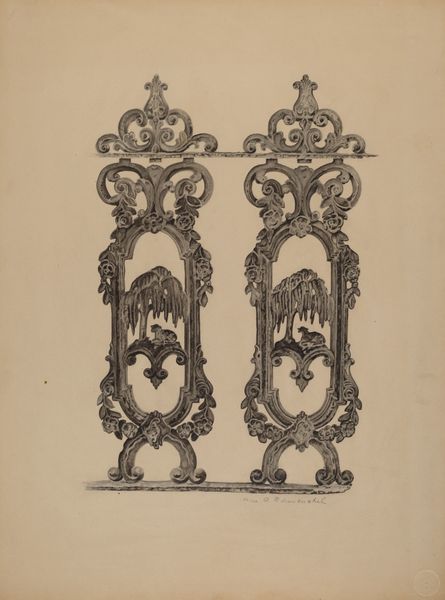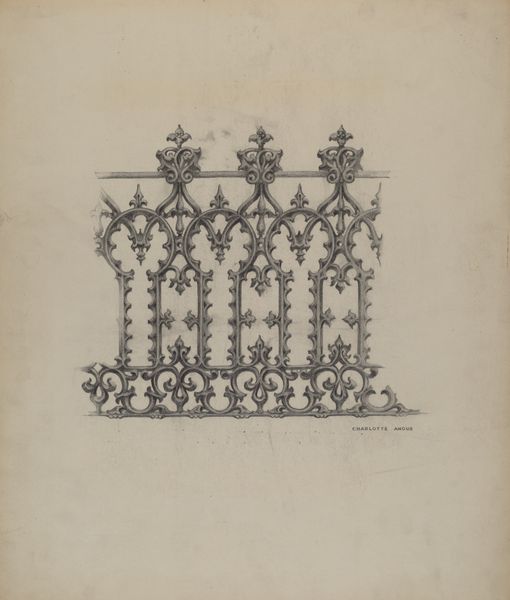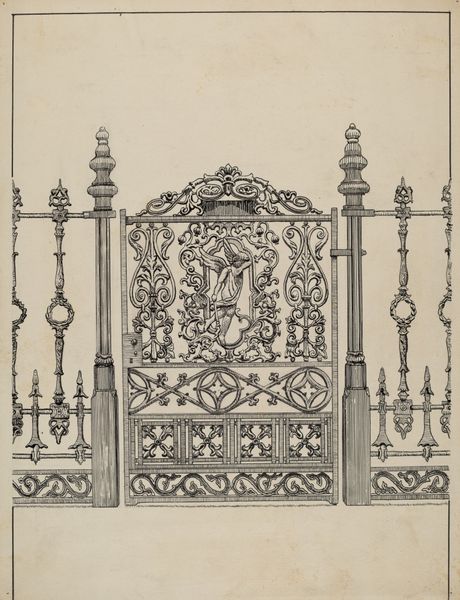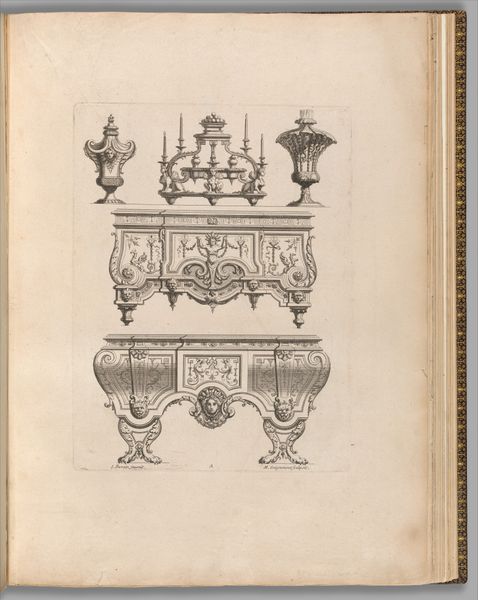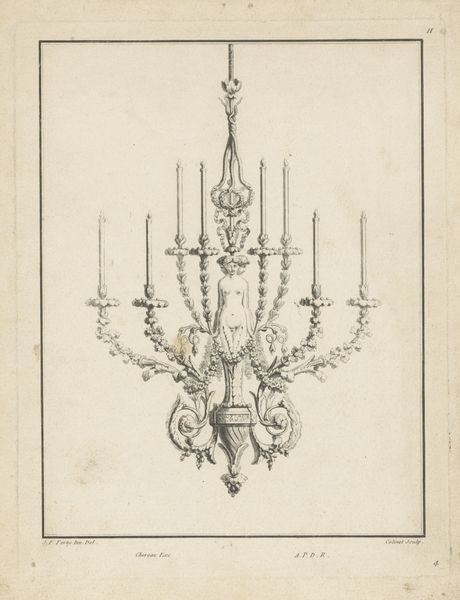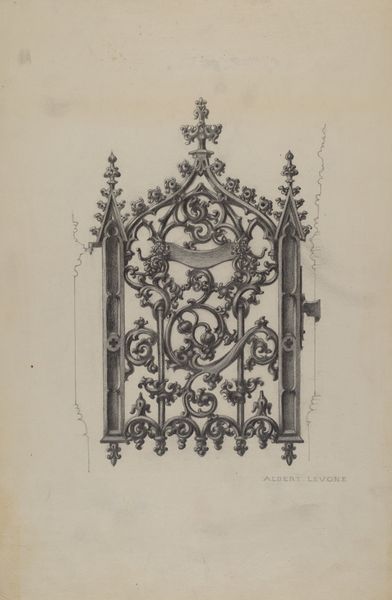
drawing, pencil, graphite
#
drawing
#
coloured pencil
#
geometric
#
pencil
#
graphite
#
academic-art
Dimensions: overall: 51 x 38.4 cm (20 1/16 x 15 1/8 in.)
Copyright: National Gallery of Art: CC0 1.0
Editor: So, here we have Eugene Shellady's "Fencing," created in 1937. It appears to be a graphite and pencil drawing. The detail is quite remarkable, especially the ornate ironwork. It evokes a sense of old-world craftsmanship. What strikes you most about this piece? Curator: What grabs my attention is the focus on industrial design, presented through meticulous craft. Shellady isn't simply depicting fencing; he's showcasing the process of its creation, the labor invested in its form. Consider the economic context of 1937, the tail end of the Depression – what does focusing on a piece of decorative architecture imply about aspiration, class, and access? Editor: That’s a fascinating point! I hadn’t considered the social context. Is the precision and detail a reflection of the artist's skill or something else? Curator: I believe it reflects both Shellady's technical skill, sure, but also perhaps hints at a wider artistic culture emphasizing detailed representations linked to production and the materiality of everyday life, as well as a reflection on who has the means to employ and display such ornamentation. Where does utility end and indulgence begin? This piece pushes those boundaries. Editor: So it's about questioning the value of ornamentation within a specific social framework? Curator: Precisely! It invites us to contemplate the materials, the means of production, and the socioeconomic implications woven into a seemingly simple drawing of a fence. Editor: This has completely changed how I see the drawing. It's more than just a fence; it's a statement about labour and social values. Curator: Absolutely. Seeing art as a product of its time allows for deeper interpretations. It prompts you to seek meaning beyond just aesthetic appeal. Editor: I’ll definitely remember to look at art with an understanding of its production. Curator: That’s what makes it meaningful. The real reward in art isn’t what it looks like, but rather what it communicates about humanity.
Comments
No comments
Be the first to comment and join the conversation on the ultimate creative platform.


